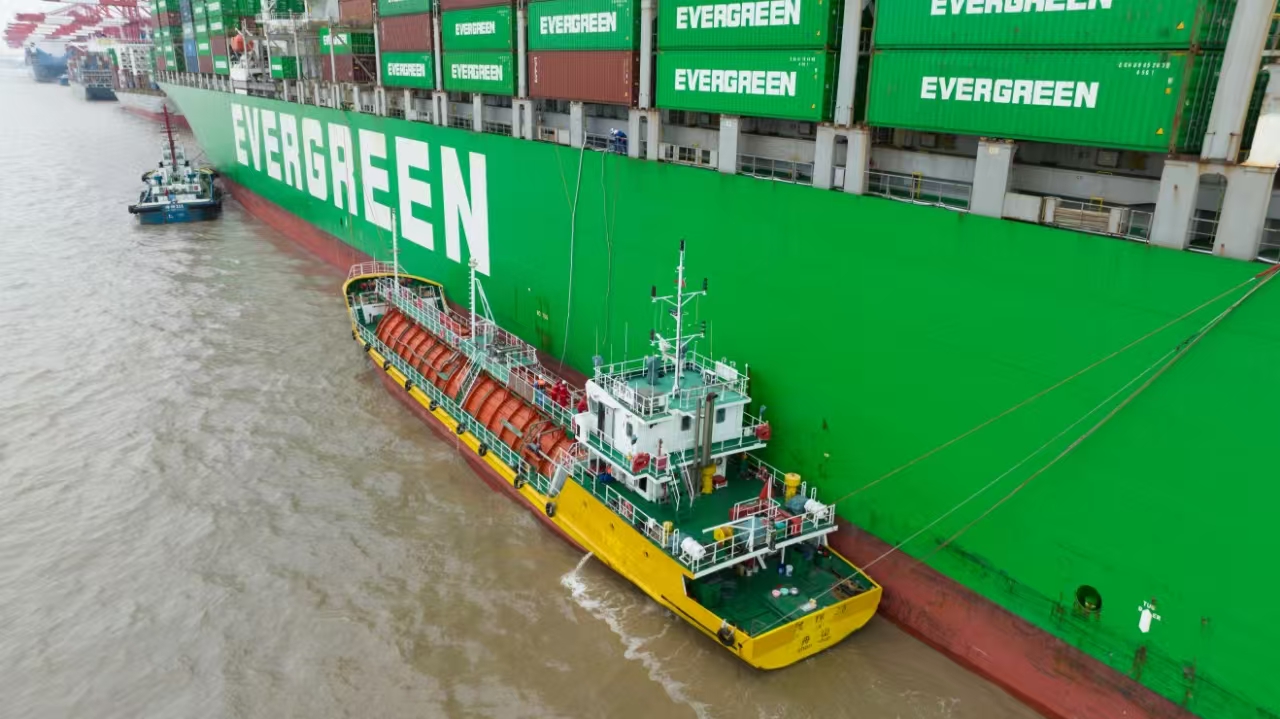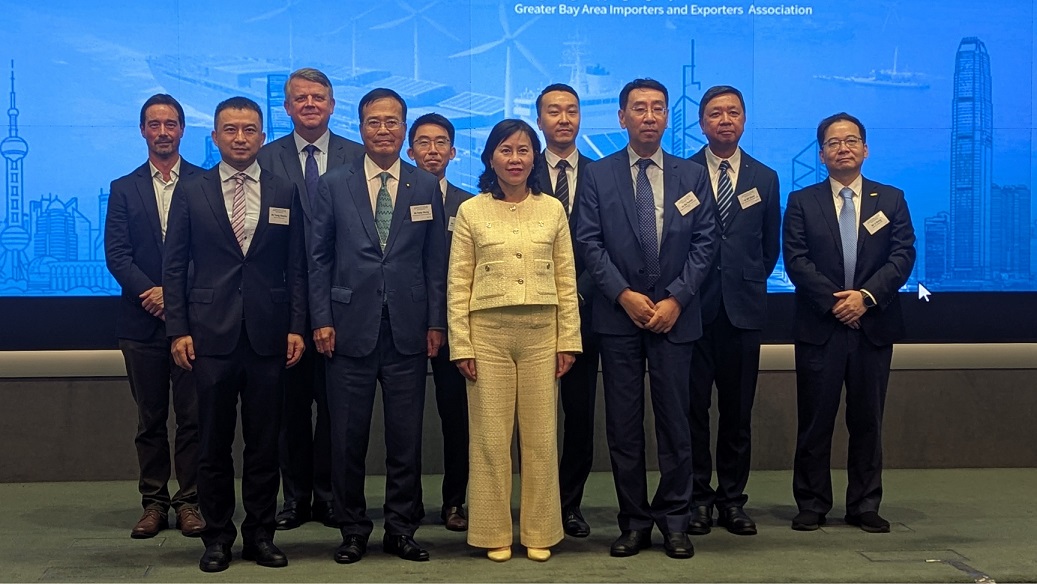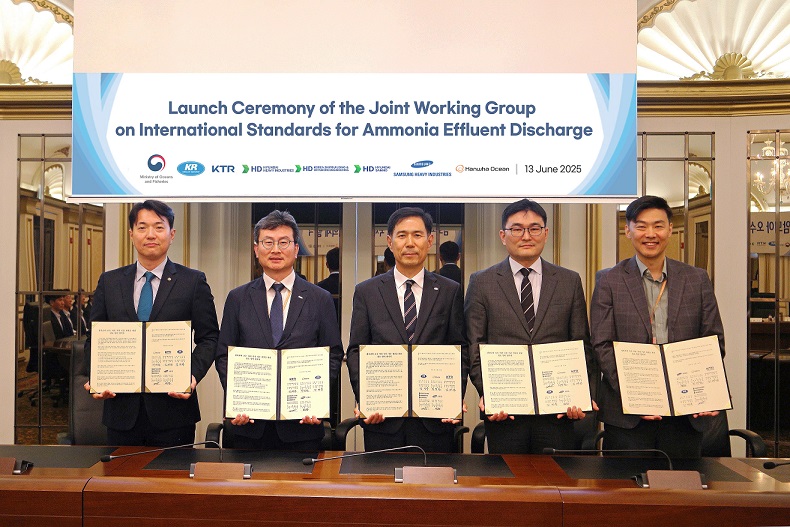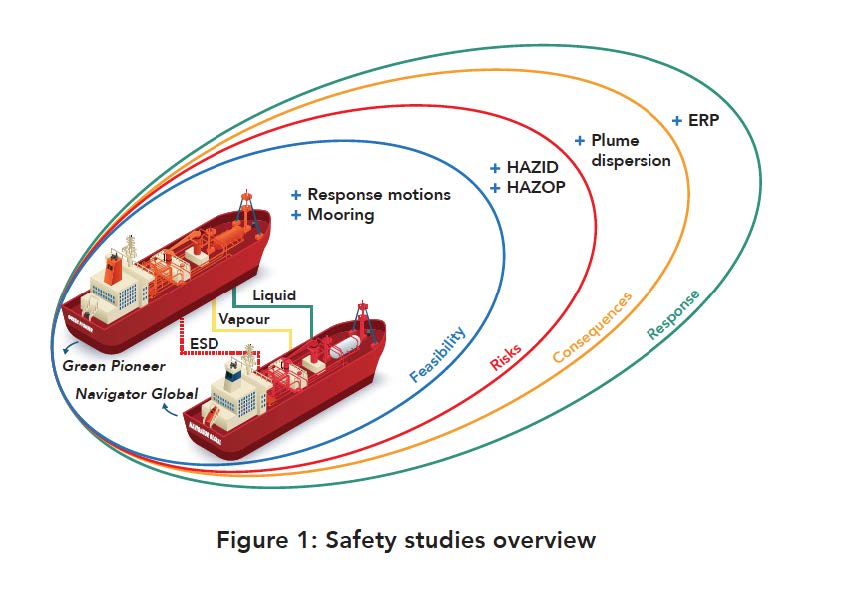 On 19 June, the world’s first ship-to-ship liquified carbon dioxide (LCO₂) transfer was successfully completed at the Yangshan Deep-Water Port in Hangzhou Bay, Shanghai.
On 19 June, the world’s first ship-to-ship liquified carbon dioxide (LCO₂) transfer was successfully completed at the Yangshan Deep-Water Port in Hangzhou Bay, Shanghai.
The project was led by Shanghai Qiyao Environmental Technology Co., Ltd (SMDERI-QET), a subsidiary of Shanghai Marine Deisel Engine Research Institute (SMDERI), a unit of the China State Shipbuilding Company (CSSC). The project was supported by the Shanghai Port Group Energy Co. and the Shanghai Port Group Logistics Co.
The transfer marks a significant milestone for an industry under growing pressure to comply with increasingly strict local, regional and international regulations on emissions from ships. By completing the industry’s first “end to end” solution, which includes onboard carbon capture, liquefaction, storage, and ship-to-ship offloading to a carbon utilisation facility, the project cements China’s leadership role in decarbonising shipping.
Developed by SMDERI-QET, the Onboard Carbon Capture and Storage System (OCCS) achieved a comprehensive carbon dioxide capture rate of over 80 percent with a liquid carbon dioxide purity of 99.9 percent. And since the delivery of the first full-process OCCS in early 2024, SMDERI-QET has successfully completed multiple end-to-end LCO₂ offloading projects, from capture to recycling, which have allowed participating owners to achieve higher CII ratings: A first for OCCS technology.
However, until now, wider uptake of OCCS technology has been slowed by inadequate port infrastructure. According to Su Yi, General Manager of SMDERI-QET, many ports are not equipped to manage large-scale carbon storage and recovery or do not have the systems required for ship-to-shore offloading capabilities.
“Furthermore, installing the necessary facilities places high requirements on port and terminal infrastructure, which may be limited by draft restrictions and other factors,” he says. “The ship-to-ship LCO₂ transfer project at the Yangshan Deep Water Port not only proves the viability of OCCS it also eliminates the need for terminal facilities for the transfer, storage and recovery of liquified carbon dioxide.”
Su notes that compared with the ship-to-shore connections, ship-to-ship LCO₂ transfer significantly improves operational flexibility, making it possible to manage loading and offloading for vessels operating in terminals with inadequate infrastructure. “The offloaded LCO₂ is transported by ship directly to a storage and utilisation facility, thus removing one of the biggest obstacles for the large-scale application of carbon capture technology,” he says. “This landmark trial represents a critical step towards realising scalable carbon management pathways across shipping and adjacent industries.”
Looking ahead, SMDERI-QET will join hands with domestic and international partners to actively participate in and promote the formulation of relevant regulations and standards for marine carbon capture and transportation. “We are confident that the completion of the world’s first ship-to-ship LCO₂ transfer, together with the further development of onboard carbon capture technologies, will not only lead to rapid development of a global network of shore-based carbon storage and utilisation facilities, but accelerate the decarbonisation of shipping,” says Su.
source: Blue-C
The opinions expressed herein are the author's and not necessarily those of The Xinde Marine News.
Please Contact Us at:
media@xindemarine.com

 SMDERI-QET achieves world’s first ship-to-ship LC
SMDERI-QET achieves world’s first ship-to-ship LC  ICS and European Shipowners | ECSA welcome the Hong
ICS and European Shipowners | ECSA welcome the Hong  Towngas signs green methanol MOUs with parties incl
Towngas signs green methanol MOUs with parties incl  KR Teams Up with Leading Shipbuilders and Korea Tes
KR Teams Up with Leading Shipbuilders and Korea Tes  New ICS Chairman Designate named and Secretary Gene
New ICS Chairman Designate named and Secretary Gene  GCMD launches report "Path to Zero-Carbon Ship
GCMD launches report "Path to Zero-Carbon Ship